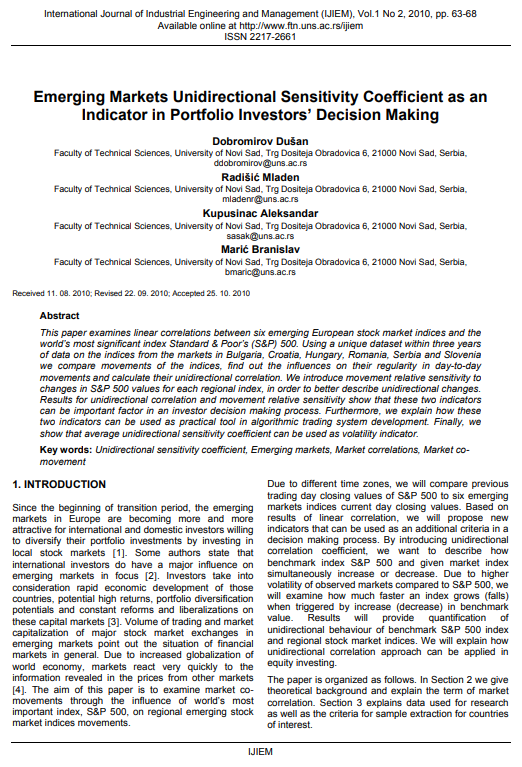Emerging Markets Unidirectional Sensitivity Coefficient as an Indicator in Portfolio Investors’ Decision Making

Published 2010-06-30
abstract views: 28 // FULL TEXT ARTICLE (PDF): 0
Keywords
- Unidirectional sensitivity coefficient,
- Emerging markets,
- Market correlations,
- Market co-movement
How to Cite
Copyright (c) 2023 International Journal of Industrial Engineering and Management

This work is licensed under a Creative Commons Attribution 4.0 International License.
Abstract
This paper examines linear correlations between six emerging European stock market indices and the world’s most significant index Standard & Poor’s (S&P) 500. Using a unique dataset within three years of data on the indices from the markets in Bulgaria, Croatia, Hungary, Romania, Serbia and Slovenia we compare movements of the indices, find out the influences on their regularity in day-to-day movements and calculate their unidirectional correlation. We introduce movement relative sensitivity to changes in S&P 500 values for each regional index, in order to better describe unidirectional changes. Results for unidirectional correlation and movement relative sensitivity show that these two indicators can be important factor in an investor decision making process. Furthermore, we explain how these two indicators can be used as practical tool in algorithmic trading system development. Finally, we show that average unidirectional sensitivity coefficient can be used as volatility indicator.
Article history: Received (11.08.2010); Revised (22.09.2010); Accepted (25.10.2010)

